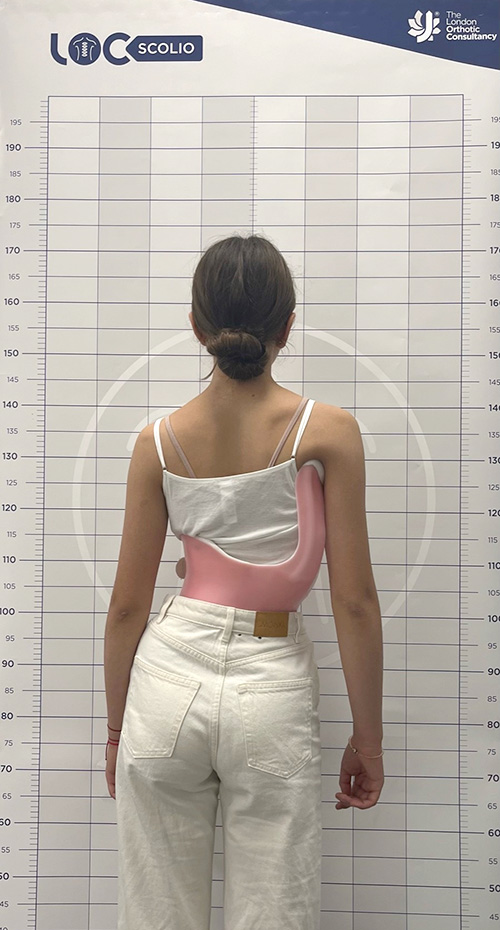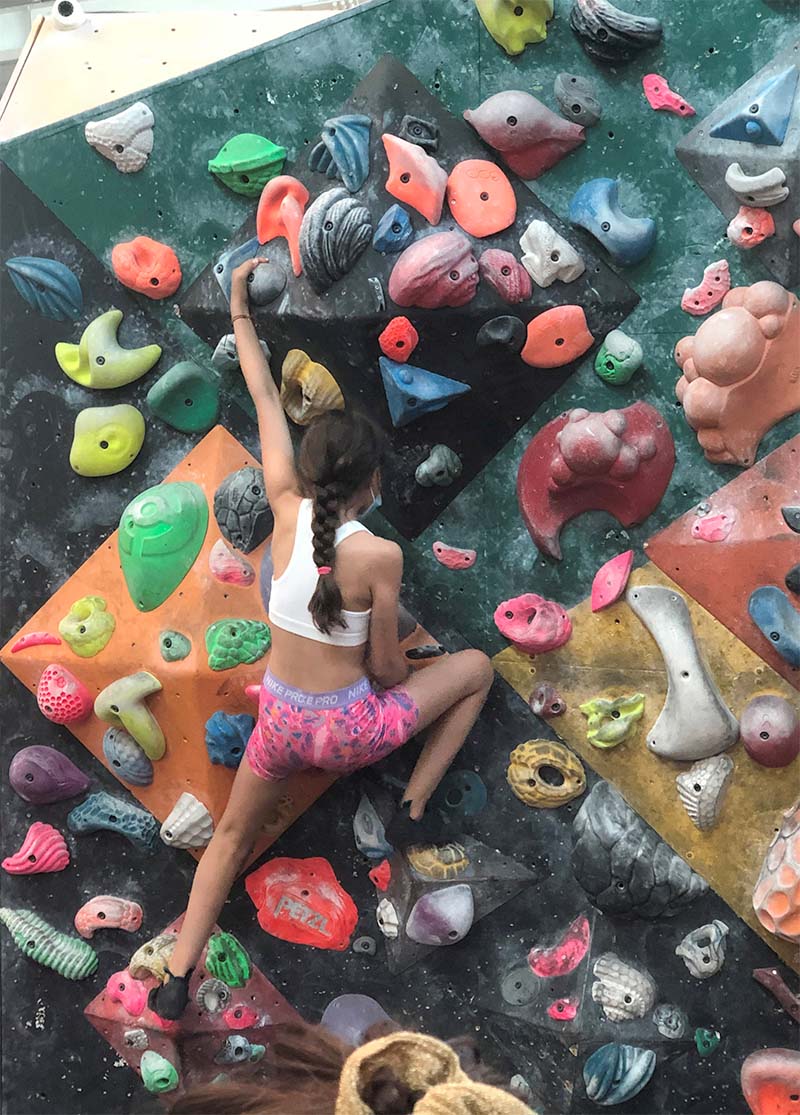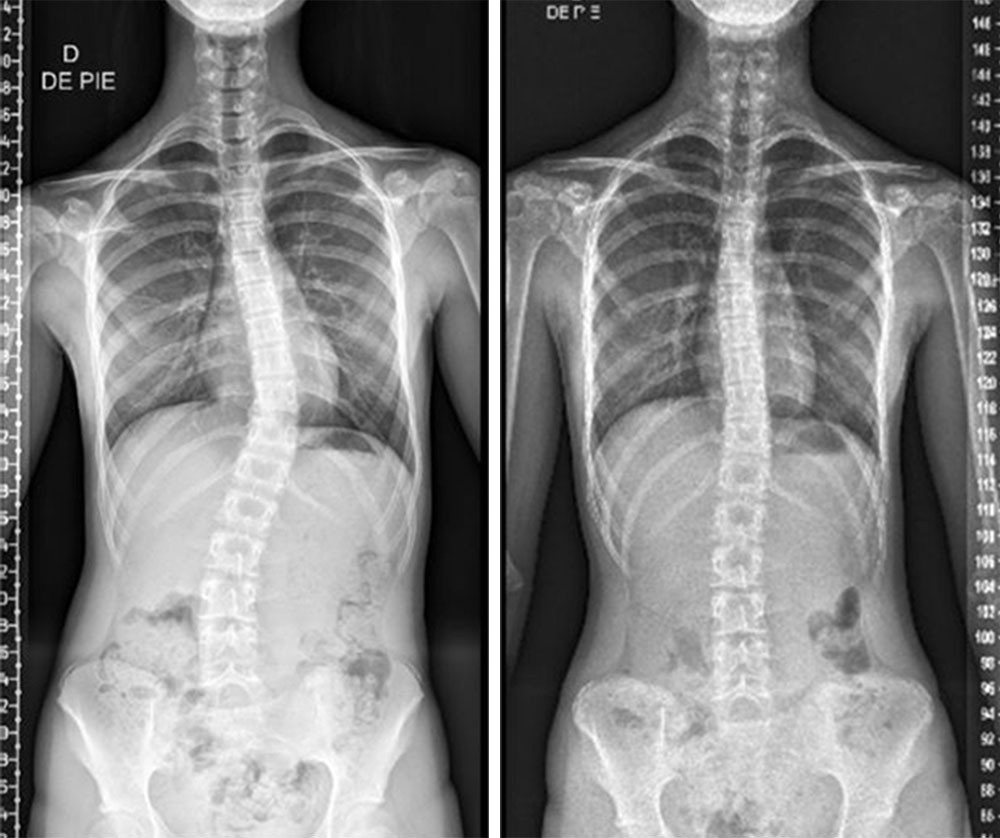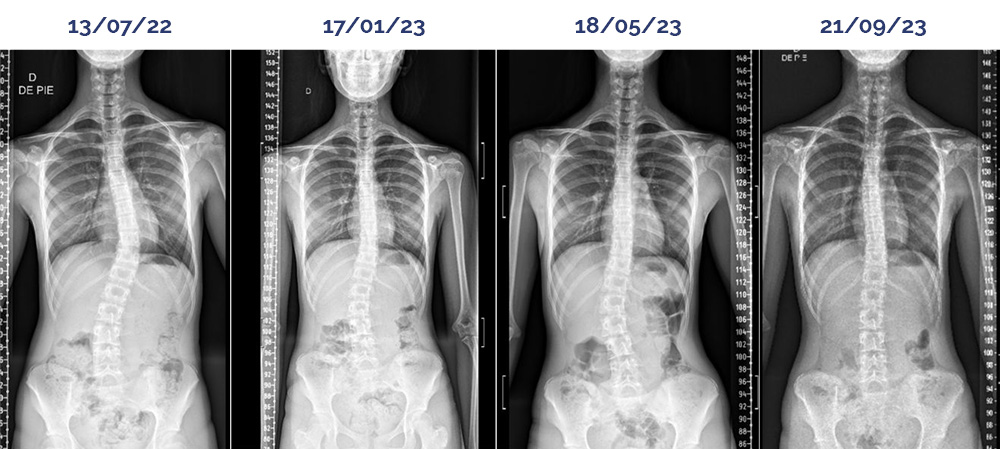
Matilde wearing her bespoke LOC Scoliosis Brace
31 January 2024
Matilde’s parents first discovered she had scoliosis in the summer of 2022. Her father, Felipe, is a medical doctor, and he was reading up about the medical checks that should be done in adolescence and idiopathic scoliosis was on the list.
“We realised that our GP had never done this, and we then noticed a slight asymmetry in her back. We weren't worried, as Matilde had a good posture and was a keen climber and did other sports too, but we asked her GP for a scan just to be sure. She explained to us that a full spinal x-ray was removed from the standard of care years ago and is only taken when scoliosis is suspected.”
However, after visual analysis, a scan was recommended and revealed a diagnosis of adolescent idiopathic scoliosis. Matilde was referred to a spinal surgeon who outlined the different treatments available, including surgery. Matilde’s Cobb angle was 29 degrees and therefore rated as moderate to severe.
Matilde was referred for bracing treatment. The best scoliosis treatment available in Chile is a traditional brace (like the Boston brace available on the NHS). The surgeon told us that the idea of the brace was to hold the curve and try to decrease the progression so surgery could be avoided. Felipe recalls, ”Matilde struggled with the idea of wearing it but she did it. She is incredibly resilient. However, given the limited ambitions of the bracing treatment available in Chile, we started research focused on finding the best available brace technology to find a brace treatment that would help her more.
“As I am a medical doctor, I read numerous scientific papers on the subject, and after a week of research, we decided to contact the London Orthotic Consultancy over other centres in the USA, Europe and Asia. We had the chance to have a video appointment with Senior Orthotist Anna Courtney where she explained to us the characteristics and benefits of LOC’s corrective scoliosis brace. After the remote consultation, we took the decision instantly and arranged to travel to London for a face-to-face assessment and fitting of LOC’s Scoliosis brace.”

Matilde practising her rock climbing skills during treatment
Matilde was assessed by Anna in September 2022. She had a primary thoracic curve and was Risser sign 2 with lots of growing still to do. The risk of her curve progressing (i.e. getting worse) was high – 70% - and exactly matched the criteria for treatment with LOC’s corrective brace. Research has shown that the average correction in the LOC’s scoliosis brace is 86%, this compares with 50% in a Boston brace. LOC’s treatment programme for scoliosis also includes specialised Schroth-based therapy sessions provided by Scoliosis SOS.

Before and after x-rays show Matilde's Cobb angle reduce from 29 degrees to 14 degrees after just over a year of wearing the LOC scoliosis brace
After just four months of treatment, Matilde’s Cobb angle went down to 14 degrees. This is a testament to the efficacy of the brace and the treatment programme but also a just reward for Matilde’s adherence to both the wearing regime (22 hours a day) and the exercise programme devised for her.
Matilde says, “The first few weeks were tough as my back was adjusting to the brace, but I got used to it and I always manage to wear it for 22 hours a day. I think the exercises have helped me, I have added some of them to my work-out routines to make my back and core stronger and I also have added them to my climbing and soccer training sessions. Anna’s approach has been great since the start of treatment.
She’s been very empathetic, nice and caring with me and has always tried to help me in any way possible, particularly while I was struggling with wearing my brace for school. She helped me understand that I needed to stick with it because the brace will give me a very good life in the future. I appreciate her very much.”

X-rays show how Matilde's spine straightens over the course of treatment in just over a year of wearing the LOC Scoliosis Brace
Matilde’s last x-ray in September showed that the Cobb angle was near total correction. Felipe says, “Anna is both an excellent professional and a kind person and has been very supportive in every aspect during Matilde’s treatment journey.”
If you think your child or teenager has scoliosis, you can contact LOC directly to arrange a free virtual consultation with one of our scoliosis specialists.
Scoliosis is a condition where there is an abnormal curvature of the spine. It is a three-dimensional condition with deviation of the vertebrae in the sagittal, coronal and transverse planes.
Treatment recommendations are based on the Cobb angle of the patient and the risk of progression. For curves under 20 degrees, we monitor the patient’s curve while the patient undertakes a tailored exercise programme based on Schroth principles; this is delivered by our partner in providing scoliosis treatment, Scoliosis SOS.
For curves above 20 degrees, we prescribe our LOC Scoliosis Brace which works three-dimensionally to guide the patient’s spine into a more correct position, substantially reducing their Cobb angle. For optimum correction, we recommend that bracing is combined with specialist physiotherapy.
This joint approach means our patients are getting the best and most appropriate advice from two scoliosis specialists, one with an orthotic perspective and one with a physiotherapy perspective.
LOC makes the vast majority of orthotics we fit, and our scoliosis brace is no exception. It is difficult to over-emphasize how important it is to have our own manufacturing unit on site. Lead times are shorter because we are not reliant on outside suppliers, and we can fine-tune our braces at the fitting stage to ensure optimum efficacy and comfort.
The LOC Scoliosis Brace is a 3D, hypercorrective, Cheneau-Gensingen derivative brace, known as one of the most corrective and modern scoliosis braces available in the UK. It is designed to:
The brace is entirely unique and tailored to the patient’s spinal curve pattern, ensuring optimal skeletal correction while prioritising comfort.
Unlike traditional braces, it opens from the front for easier self-application and maintains a low profile under clothing.
The LOC Scoliosis Brace is worn 22 hours a day (including nighttime) and works in conjunction with Schroth-based therapy for maximum results.
Typically, there is an initial consultation followed by a fitting appointment and then pre- and post-reviews after in-brace x-rays; thereafter reviews every three months until the end of treatment. For the majority of our patients who are adolescents, we believe it is essential that there are regular assessments and reviews to ensure that the brace is fitting well; we will make tiny adjustments to the brace to ensure optimum comfort and optimum correction. We have found that comfort is a major contributor to an individual’s compliance with the prescribed wearing regime. In addition, the close contact between patient and clinician ensures patient motivation resulting in better outcomes at the treatment end.
We are pleased to offer a free-of-charge, virtual assessment should you wish to be screened for scoliosis. If we feel a referral to an Orthopaedic Consultant is warranted, we recommend a consultation at The Wimbledon Clinic, Parkside with Mr Darren Lui, Mr Jason Bernard or Mr Tim Bishop. The consultant would arrange the imaging as required. Obviously, you can also seek advice from your family GP.